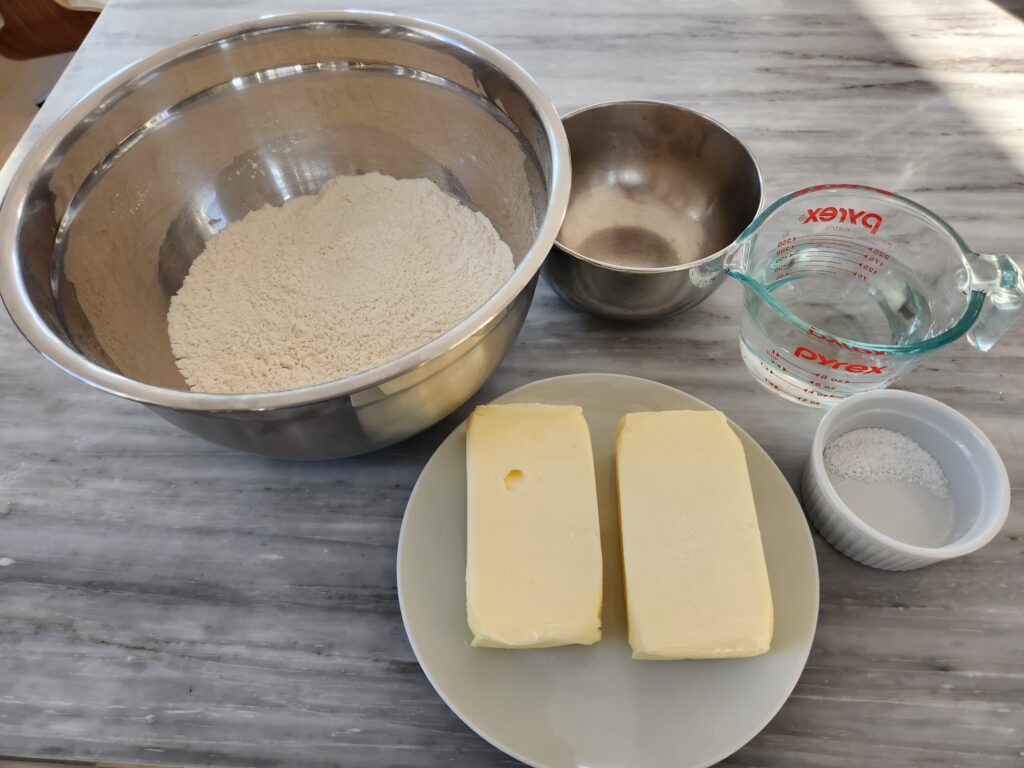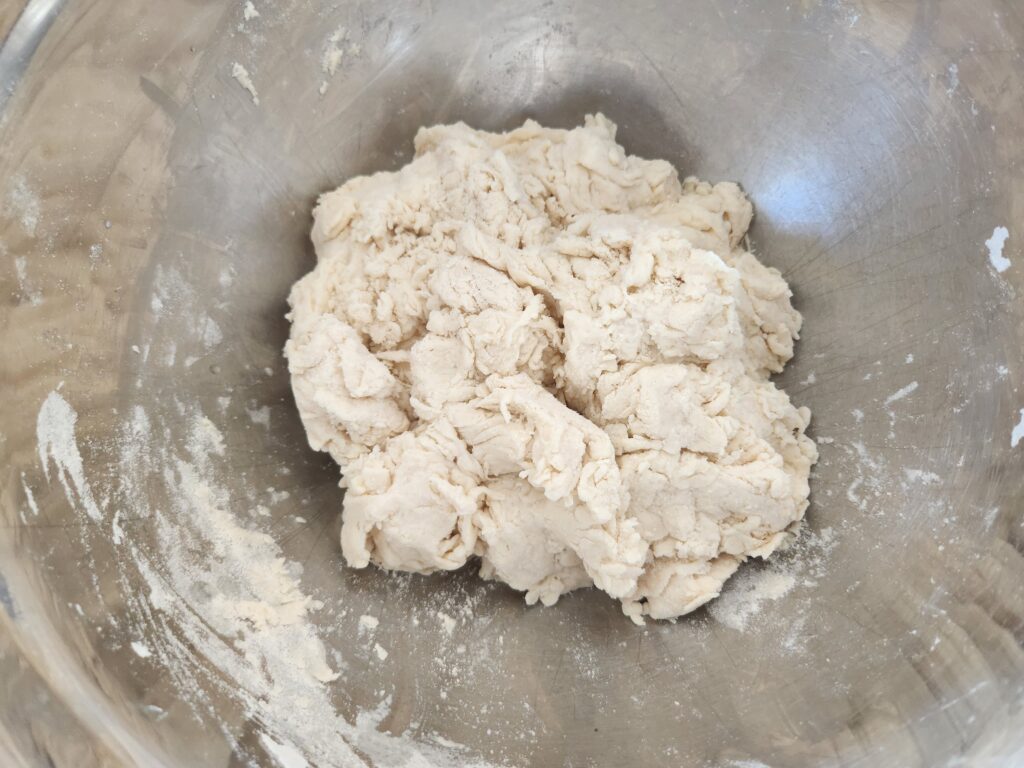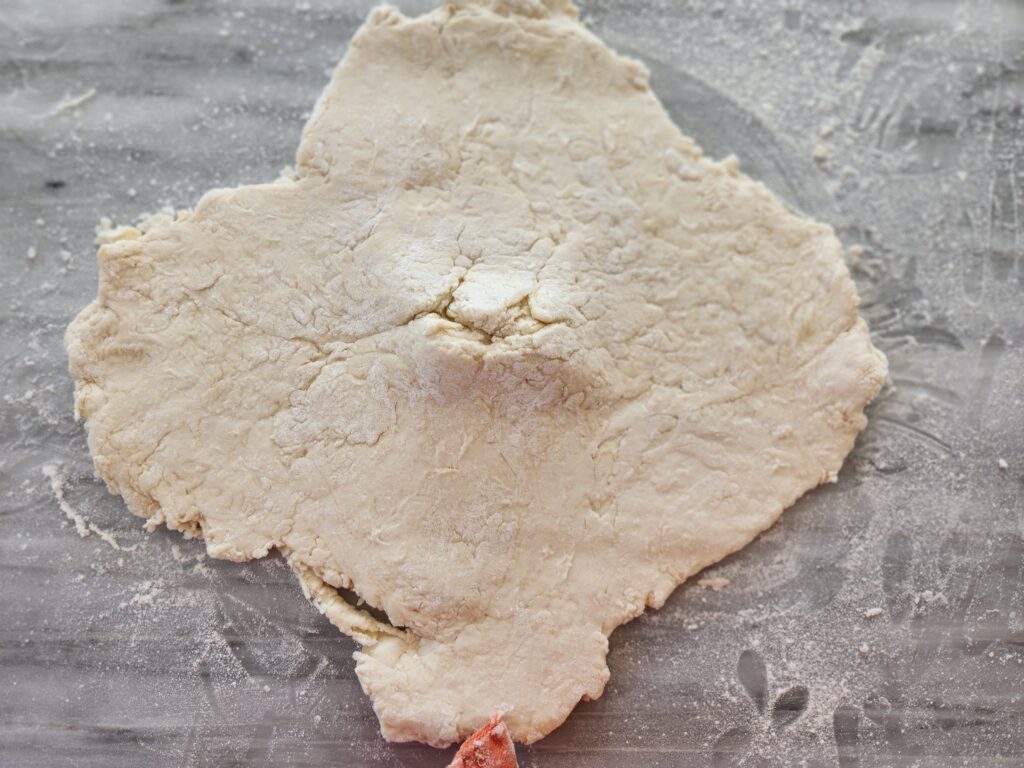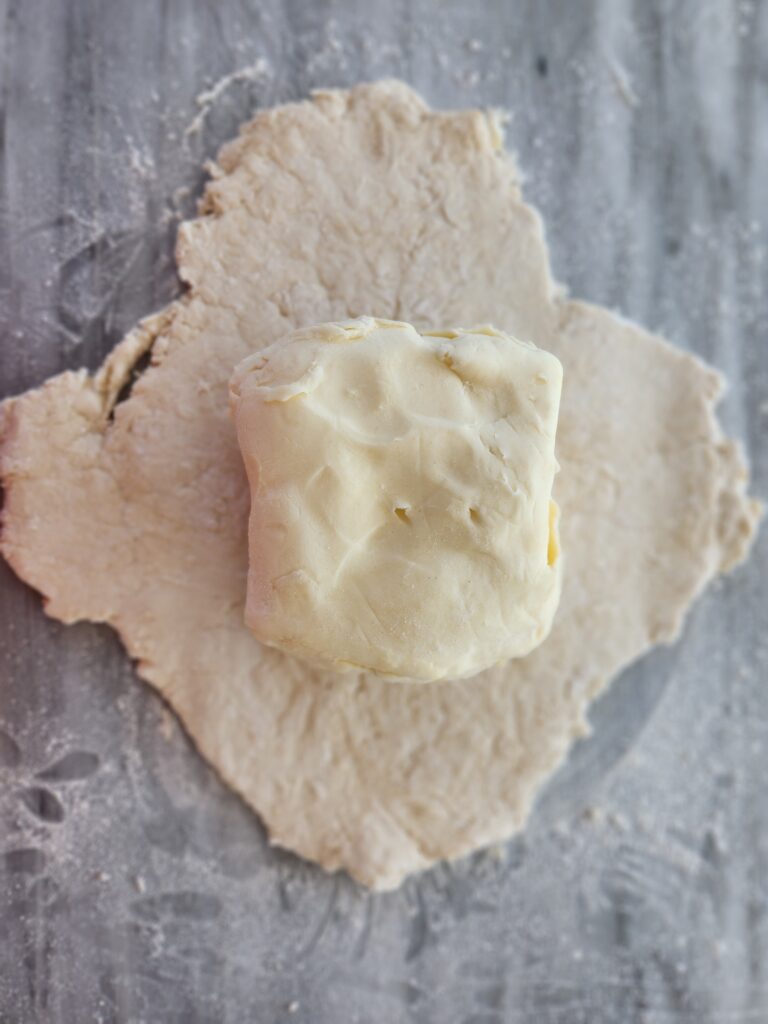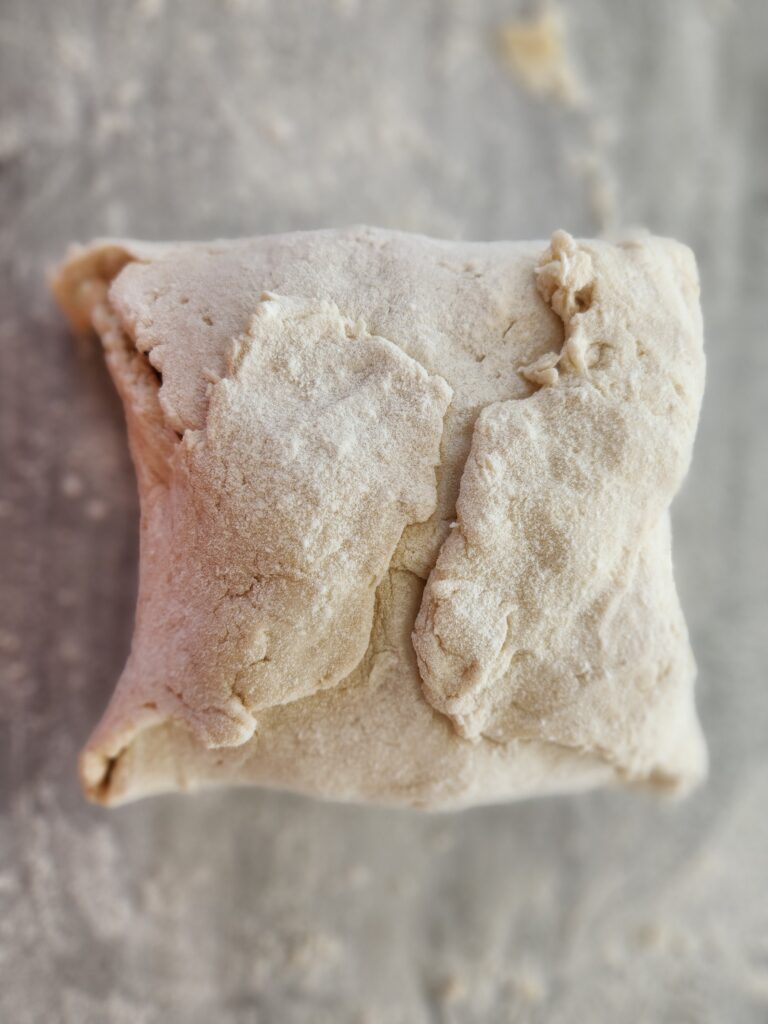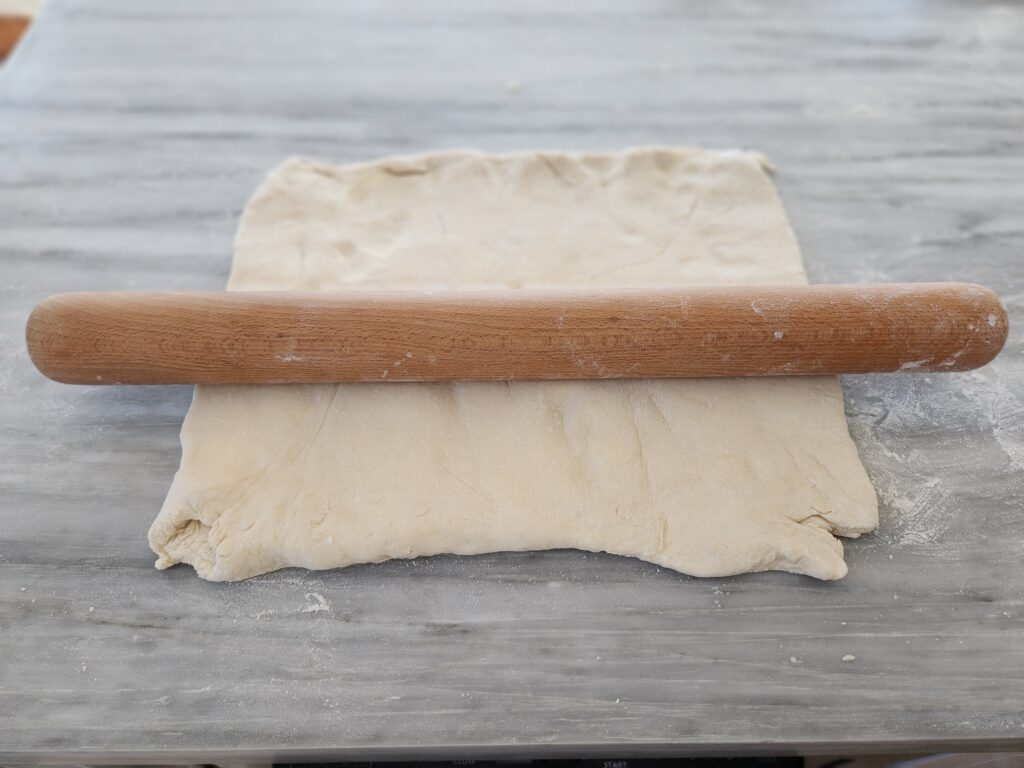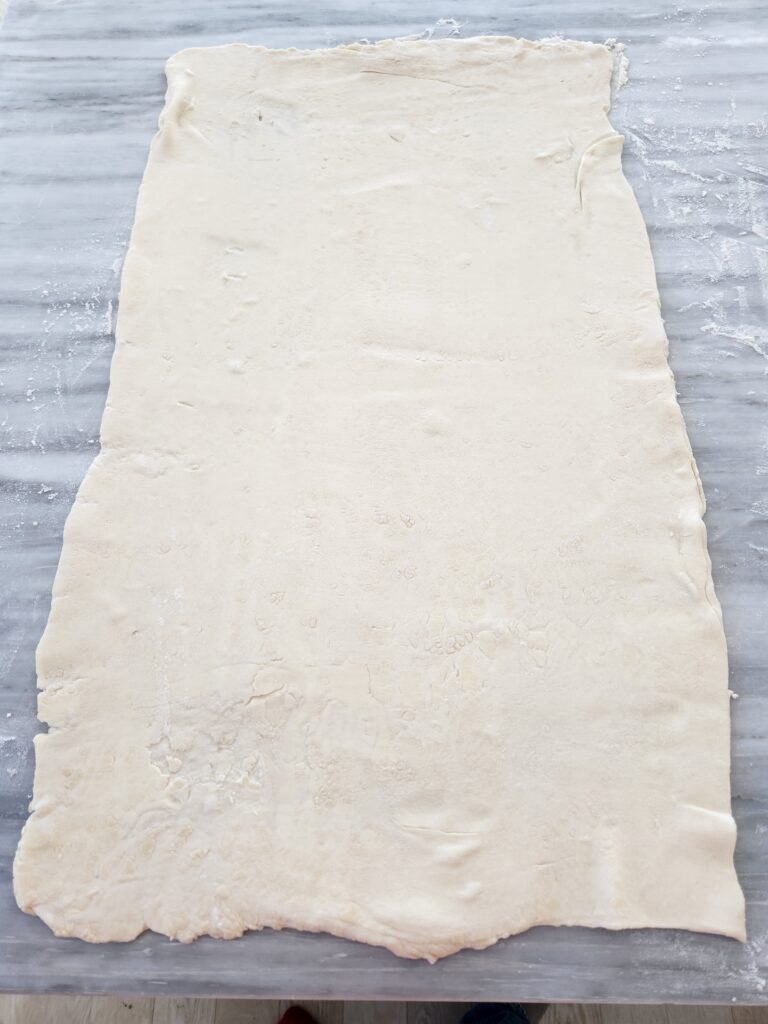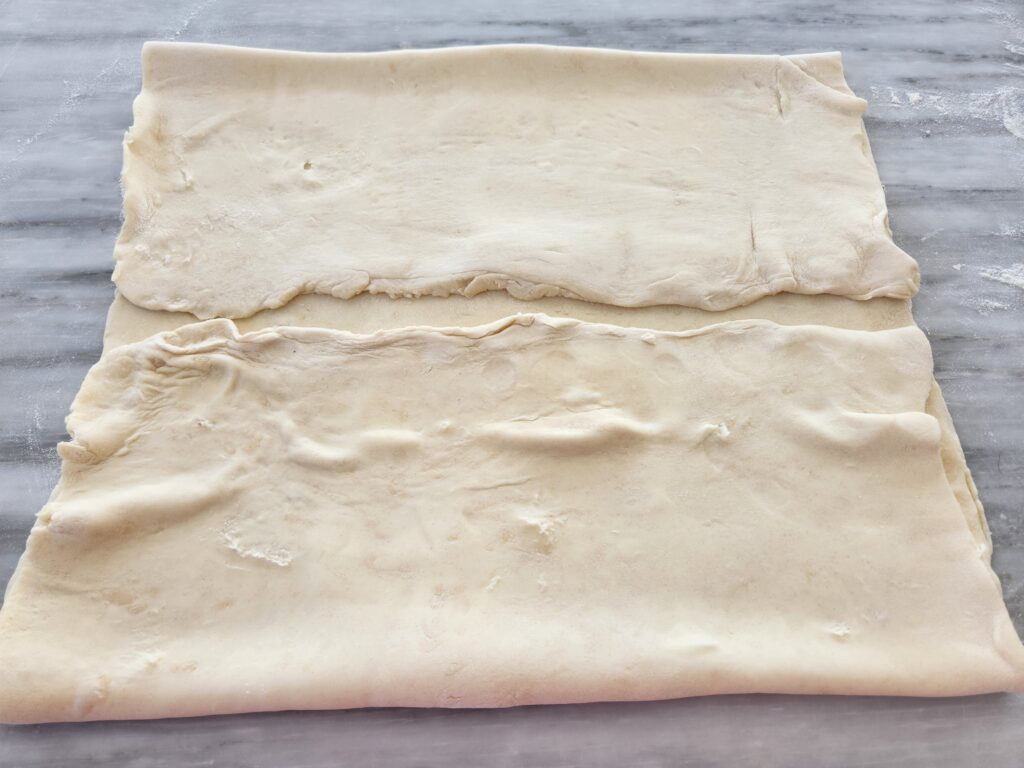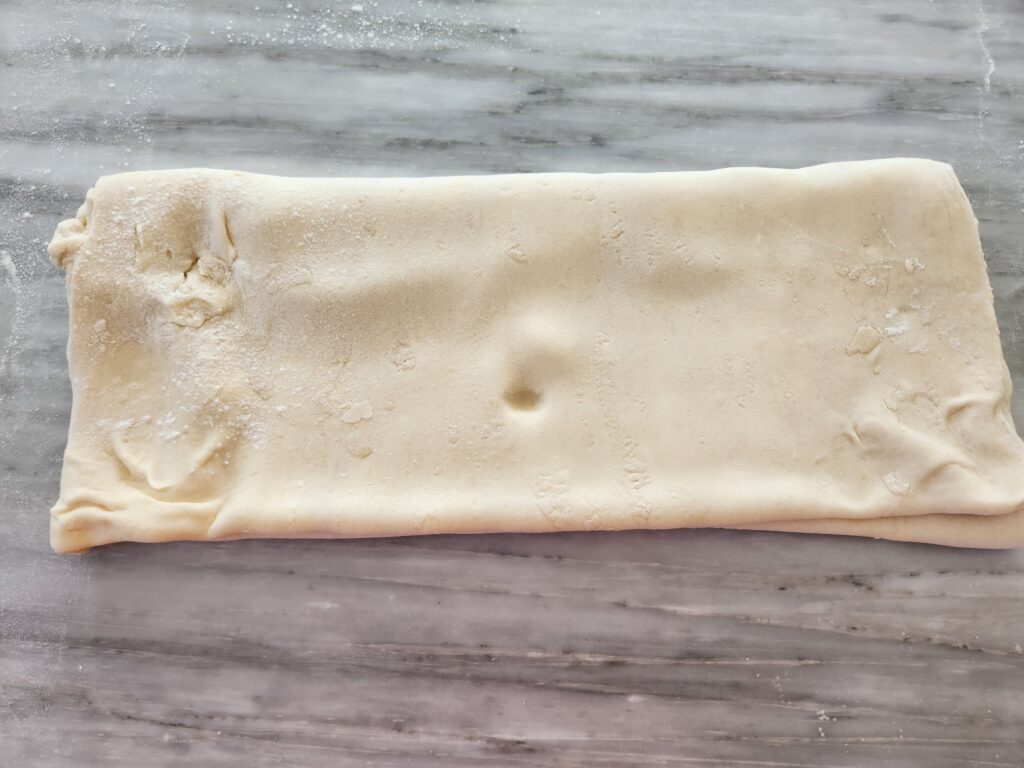Puff Pastry
Puff Pastry (Pâte Feuilletée) one of the fundamental pastry doughs, is the flaky, tender, and buttery foundation of innumerable savory and sweet pastries. Placed in the oven, a one-quarter inch thick piece of puff pastry will rise to several times its height.
Among the savory uses are towering bouchées (individual patty shells) and vol-au-vent (large patty shells) made from puff pastry were used in classic haute cuisine as the vessel for various fillings. The tenderloin of beef in Beef Wellington and salmon in Coulibiac are both wrapped in this delectable pastry. More down to earth savory uses include cheese straws and sausage rolls.On the sweet side, puff pastry is used in fruit turnovers, pithiviers (almond pastry), free form fruit tarts, palmier, cream horns, and of course, Napoleons (Mille-Feuilles).
Puff Pastry is created from two elements; the Détrempe, a soft dough made from flour, salt, and cold water and the butter. The butter is placed inside the Détrempe, creating the pâton, which is then rolled into a long rectangle and folded in four, known as book or four-fold. This rolling and folding are repeated four times, creating 256 layers of dough and butter (4x4x4x4 or 44)
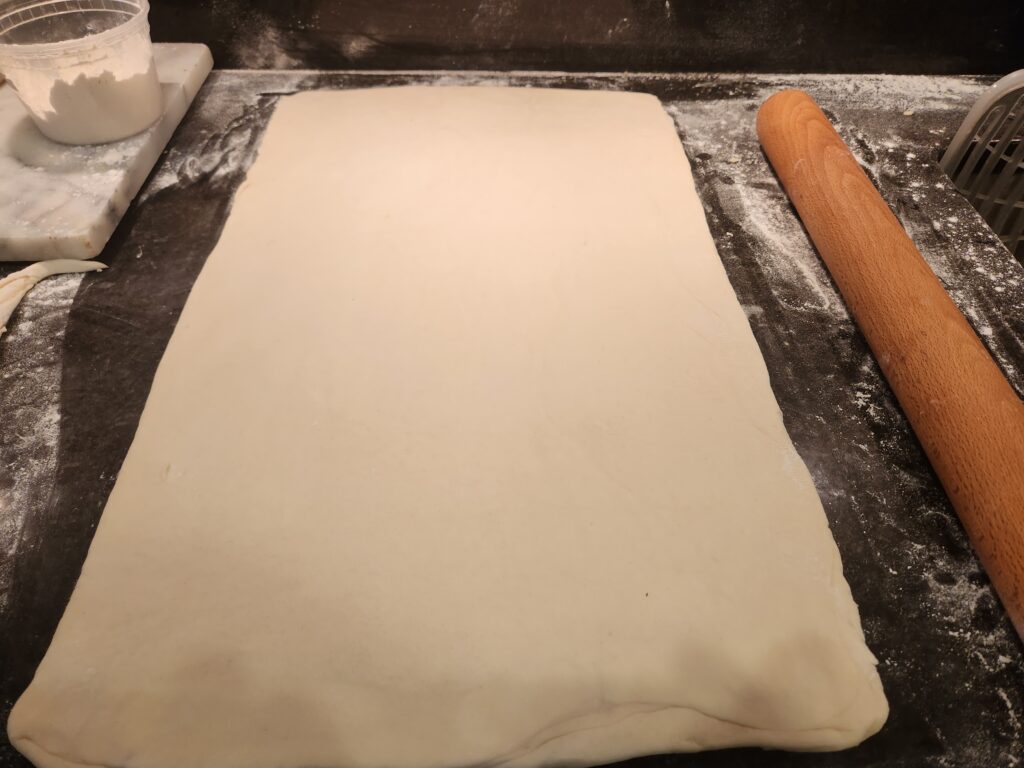
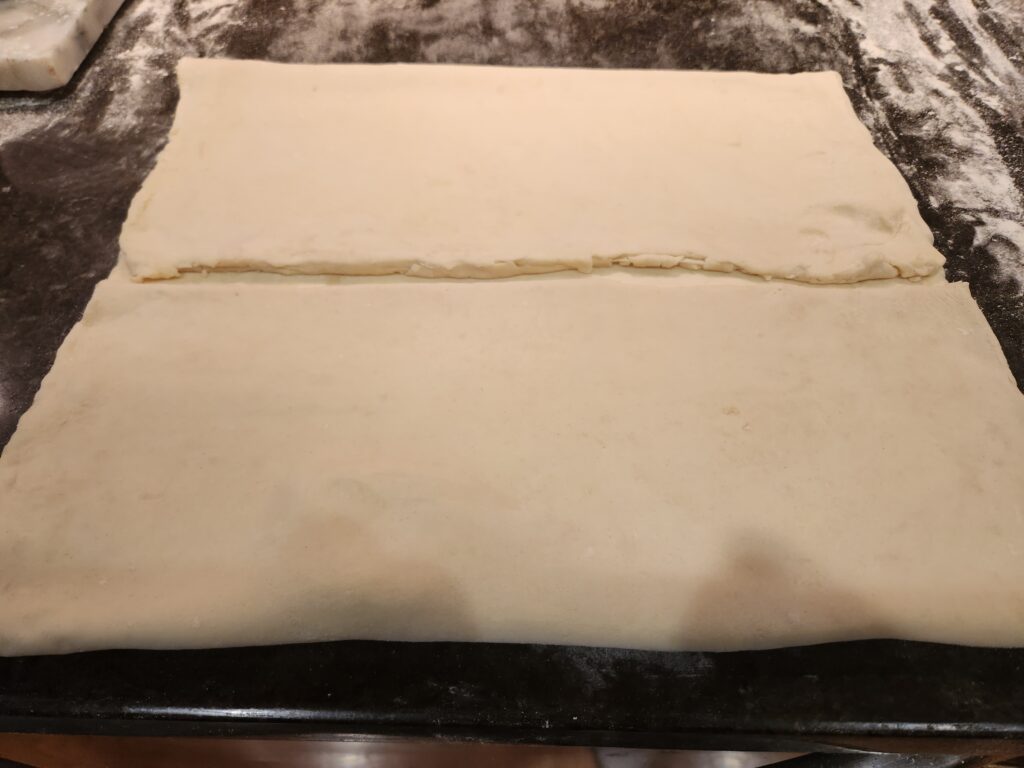
In the heat of the oven the moisture in the butter as well as that in the détrempe creates steam which forces the leaves of the dough to rise one by one, creating the rise and flakiness.
Puff pastry is available in most stores’ freezer sections, but many brands are shortening based, which lack the delicate butter flavor. So, learning to make it at home is definitely worthwhile and very rewarding. As Julia Child said, “when you have mastered puff pastry you will…bless yourself for every moment you spent learning its techniques.”
The only things required for the project are; high quality butter, a good rolling pin (suggestions following recipe), a cool kitchen, lots of work space, and a clear shelf in your refrigerator.
Puff Pastry
Yield: 2 lb 10 oz dough
Ingredients:
Détrempe
2 ½ cup (12 oz / 340 g) all-purpose flour
1 cup less 2 tbl (4 oz / 113 g) cake flour, sifted
4 tbl (2 oz / 57 g) unsalted butter, cut in small pieces
1 cup (8 fl oz) cold water
1 tsp salt
Beurrage (butter)
2 cups less 2 tbl (14 oz / 397 g) high quality unsalted butter
¼ cup (1.15 oz / 33 g) flour, from above
Dusting flour, as needed
Special tools and equipment:
- Heavy duty rolling pin1
- Large pastry brush
- Jelly roll pan
- Cotton kitchen towel
Pre-recipe preparations:
- Clear a shelf in the refrigerator to hold the 15″ by 10 ½” jelly roll pan.
- Clear at least space on your work counter or kitchen island. Clean well and dry.
Directions:
D©trempe:
- In bowl of standing mixer with the paddle attachment on low-speed, or in a large mixing bowl, mix together the two flours. Remove ¼ cup the butter.
- Add the small pieces of butter and let mix until no pieces of butter are discernable.
- Dissolve the salt in the water.
- On low speed, or by hand, add enough of the water to moisten all the flour and make a soft, dough. Do not overmix, the dough should be very rough at this point. Place the dough on a flour-dusted counter and form into a 7″ square. Leave on the counter while you prepare the butter.
Preparing the Beurrage (butter) and the P¢ton
- Place the butter and the reserved ¼ flour in a 1-gallon Ziplock bag, and use the rolling pin to pound the butter and flour together. The goal is to keep the butter cold, but make it malleable and a similar texture to the d©trempe.
- Form the butter into a 6″ square.
- Using your rolling pin, roll the four corners of the dough outward leaving it a thicker mound in the center.
- Place the butter square on the middle mound and cover the butter with the four flaps of dough. If necessary, cover any spots where the butter is showing through with pieces of dough.
- It will look rough at this point. Tap the dough with the rolling pin to flatten out the square. This is called the p¢ton, which consists of dough on the bottom, butter in the middle, and dough on top.
The four book-fold (four-fold) turns:
- Roll the dough into a long rectangle, 12″ by 20″. There may be spots of butter showing through the dough at this point, this is okay. Just sprinkle a little flour on them.
- Visualize the dough into four sections. Fold the top and sections of the dough toward the center point, leaving about ¼ of an inch in the center. Fold the top half over the bottom half as if closing a book. You should have a long rectangle.
- This is the first of four turns. Brush off any excess flour and press your index finger into the dough representing one turn. There are now 4 layers of butter and dough.
- Place on a very lightly dusted jelly roll pan, cover with a damp kitchen towel, and place in the refrigerator for at least one hour.
- Remove the dough from the refrigerator to a lightly dusted surface, with the long fold on your right.
- The dough will be fairly stiff so you will need to bang it with the rolling pin to make it easier to roll.
- Turn the dough so the long side is now away from you, making it easier to roll and increase the width of the dough.
- Return the long fold side to your right and roll to lengthen the rectangle until it is approximately 14″by 26″, rolling to increase the width as necessary.
- Do another four-fold, completing the second turn. Mark the dough with two finger indents, and return to the refrigerator covered with the damp kitchen towel, and let it rest for 1 ½ hours.
- Continue with the same procedures to complete the final two turns, allowing the dough to rest between turns 3 and 4.
- Upon completion of the fourth turn, there will be 256 layers of butter and dough.
- Wrap the dough well with plastic film and return to the refrigerator. Let the dough relax for at least 3 hours prior to use. The puff pastry dough may be stored in the refrigerator for 3 days for frozen for up to 2 months.
Notes:
1 Good wood French rolling pins are available from Amazon or Bridge Kitchenware. Amazon.com: Ateco 19176 Maple Wood Rolling Pin, 19-Inch, Solid Maple Wood, Made in Canada / Wood French Rolling Pin, – Bridge Kitchenware
